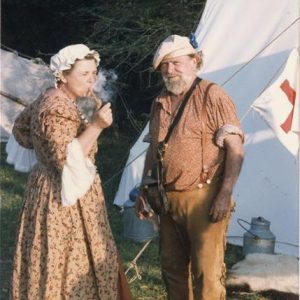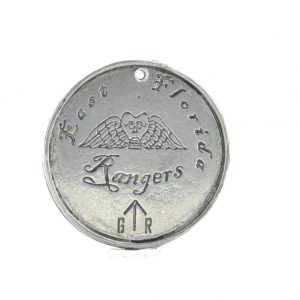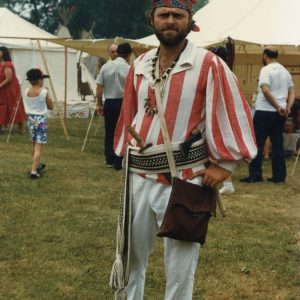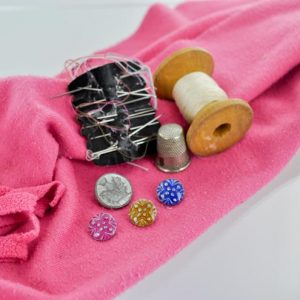EXTRACT OF COFFEE
For the Army
INSTANT COFFEE
in
The War Between the States
By
Art Ayotte (Fugawee Corp)
37th Congress Ex Doc.,
2nd Session No. 16 letter of:
THE SECRETARY OF WAR
in answer to
A resolution of the Senate of the 6th instant, relative to the purchase of extracts of coffee for the use of the troops.
War Department
Washington, January 15, 1862
Sir:
In compliance with a resolution of the Senate on the 6th instant, I have the honor to transmit herewith “all orders, instructions and correspondence relating to the purchase of extracts of coffee for the use of the troops.”
SIMON CAMERON
Secretary of War
1. It contains all the nourishing and stimulating properties of the coffee, with the addition of the nutritive element of the milk.
2. It is prepared in vacuo at a temperature of only I10 degrees F.
3. Increased efficiency in the actual use [by the means] of the coffee. Saving waste from bad means of roasting, grinding and cooking in the camps.
4. Facility of furnishing coffee on the march wherever cold or hot water can be had.
5. Economy and convenience of transportation, distributed in sealed tin cans enclosed in barrels.
6. Saving in loss in transportation and distribution of raw coffee and sugar. “Ordinary” waste of coffee I to 5 percent: “ordinary” waste of sugar 3 to 10 percent.
7. The extract, including milk will cost the government two mills per ration more than raw coffee and sugar of the same quality without milk in the ration, which difference would be more than counterbalanced by the saving in cost of transportation
8.”The coffee and sugar ration for 100, 000 men for twenty days weighs two hundred and fifty tons, one half of which would be saved … reducing the number of wagons for this ration in half.”
Further on in the ‘remarks’ section, the writer says, “Borden’s Concentrated Coffee, combined with milk and sugar, will mingle with either hot or cold water. It furnishes better coffee than is usually furnished in this city and challenges the criticism of epicures.”
The report recommended that Extract of Coffee should be tested in one or more of the new volunteer regiments. The report was enthusiastic about the new product: ensuring to the soldier, on the march or in camp, a supply of coffee as good as could be procured at a first-class hotel..”
Extract of Coffee was the invention of Professor W.L. Tilden. The Sanitary Commission’s earliest reports of tests of Professor Tilden’s Extract of Coffee were dated July 13, 1861. Later bidders for contracts were the American Desiccating Company and Borden, also known as the New York Condensed Milk Company.
Among the three bidders, Borden had the lowest price, $2 66 per gallon. The American Desiccating Company offered its product at $3.00 per gallon and Tilden had the most expensive with a price of $3.11 per gallon.
My reproductions of the coffee have always ended up as a thick mixture which looks like axle grease in color and texture. In all justice, I must say that it tastes pretty damn good. I could make it a part of my daily diet.
The Tilden product was the best in the opinion of many of the testing officers. Other officers preferred the Extract of Coffee supplied by Borden. The American Desiccating Company presented a coffee powder product that met instant disapproval. American Desiccating then tried to follow the examples of Tilden and Borden by presenting a product in “fluid” form. This, too, appears to have been rejected by the examiners.
____________________________________________________________
Office of the New York Condensed Milk Company
33 Canal Street, New York, November 21, 1861
Dear Sir:
Herewith we hand three samples of Borden’s concentrated coffee, milk and sugar
combined. Nos. 2 and 3 are nothing but coffee, milk and sugar and are samples of the lot of some 1,800 or 2,000 pounds which the company will deliver, at 4 State Street tomorrow or Saturday.
These samples differ only in that No. 3 is a little less sweet than the No. 2. Sample No. I have a small proportion of chicory: cannot say the exact amount till further advised by Mr. Borden. We furnish this sample under the impression that a small portion of chicory improves RIO, in order that, if any competitor thus improves his preparation, this company may have a sample of the same kind to exhibit.
______________________________________________________________
It seems strange that the Secretary of War would have to submit to a Senate resolution and open his files to a Congressional Committee over something as simple as a good cup of coffee. Perhaps there is something here that does not meet the eye.
‘The Extract of Coffee was first issued to men at the Soldiers’ Rest. It met with their instant approval. The same thin happened when Extract of Coffee was issued to men in Washington area hospitals. Next came trial issue on the regimental level. Units encamped in the area received rations of Extract of Coffee and were enthusiastic.
Preparing the coffee beverage required only a supply of hot water although the Extract of Coffee was said to be usable with cold water. Best of all, the beverage was consistent in taste and quality. Extract of Coffee was easy to transport and almost impossible to spoil. The troops could, at last, get decent coffee on a regular basis.
It was a delicious as well as a reliable product; superior in every way to the uncertain brew made with moldy green coffee beans charred in a greasy skillet, pounded into uncertain dust with the butt of a musket and boiled in ditch water. The Sanitary Commission also was quick to point out the health advantages, believing that it would help eliminate intestinal disorders.
The advantages of the new product were manifold: It occupied only 40% to 48% of the space of the green coffee and sugar it replaced, it weighed half as much, and it freed valuable transport for other things.
Various types of raw coffee were used to make the extract, including Rio and Java. Rio, the Brazil-produced standard for government rations, seemed to have the edge.
Extract of Coffee was a combination of concentrated coffee; milk and sugar, all vacuum distilled down to a thick paste. It came packed in several size containers from five-gallon tins down to one-quart cans. One gallon was supposed to make one day’s ration of coffee for one hundred men. Tilden packed his tin containers in barrels while Borden used wooden cases.
We don’t know what politics, bribes, and manipulation for contracts were going on behind the scenes but the competition was stiff. Reading the correspondence concerning Extract of Coffee we suddenly come across the following to Col. Eaton :
DECEMBER 10, 1861,
COLONEL: By direction of the Secretary of War, you will make no more purchases of the extract of coffee.
Very respectfully, your most obedient servant,
J.P. Taylor
Commissary General of Subsistence
Within days, numerous units raised such a ruckus that less than two weeks later the following order went out to the Army:
War Department
Washington December 24, 1861
Sir: The order grants the petition of fifty regiments in the field to be allowed to use, on their requisition,’ ” Tilden’s extract of coffee” ..
SIMON CAMERON
Secretary of War
On December 31, 1861, Professor Tilden wrote to the Secretary of War that he would not be able to furnish the 5,000 gallons of Extract of Coffee due to be delivered during the current week but that he had about 1000 gallons on hand in Washington to help fill the need. Remember that each gallon yielded one hundred rations of coffee. Five thousand gallons of Tilden’s Extract of Coffee made up into 500,000 rations of coffee. It was a big army and it loved its coffee.
Borden apparently had no such difficulty in making deliveries. Dr. Borden had invented Condensed milk some twenty years earlier when, on an ocean voyage, he had noticed the hardships suffered by children with no supply of milk. Borden’s condensed milk was a common product by the time of the war. Borden already had machinery that could be adapted to coffee production.
The original extract of coffee was produced by drawing away the water in a vacuum chamber at a temperature of 110 degrees F. It must have been very powerful stuff. Chemists of the time reported that the Borden product used 22 to 24 parts of water to one part of extract. Tilden’s product could handle 34 parts of water.
For use in a modern-day encampment; a close copy may be made by combining instant coffee and Condensed milk. Condensed milk is the original, thick, heavy-sugar product invented by Dr.Borden in the 1830s. Although other brands may be found, I like to use “Borden’s” brand condensed milk. It brings me just a little closer to the original. Do not use evaporated milk. It is not thick enough and does not contain sugar. (Might work for a diabetic, though,)
After unsuccessful experiments with liquid coffee and Italian espresso, I tried present day instant coffee mixed directly with Borden’s or Eagle brand condensed milk. I think that this mix makes a very close copy of the original.
Place one-half cup of instant coffee crystals in a cup and add a few drops of boiling water.
Use as little water as possible, adding just a few drops at a time. It doesn’t take much water to break down the coffee crystals. When the crystals have barely dissolved, you should have no more than a teaspoonful of water mixed into the half cupful of coffee powder. You can mix the dry coffee crystals directly into the condensed milk but this makes the extract look spotty and it takes more labor to mix.
Next, empty one can of Borden’s condensed milk into a suitable bowl. You may heat the condensed milk slightly in the microwave or on the stove. This is not necessary but will help with the mixing. Now mix the coffee paste into the condensed milk until it is all blended together.
The resultant Extract of Coffee will be a thick paste that looks like liquid fudge. Pack the Extract of Coffee in any suitable container.
One tablespoon of the Extract of Coffee, mixed into a tin cup of hot water will produce Civil War instant coffee, as made from Professor Tilden’s original Extract of Coffee, one of the most popular but long-forgotten food items issued to the Federal troops.
END
(The research for this article was conducted using a copy of the Congressional Record as shown at the beginning of the article. The copy used is an original kept in the State Archives of the State of Florida in Tallahassee, Florida.)
I received a message from a reenactor who followed my recipe. Here it is. I think that coffee prepared from ordinary American roast is not quite strong enough. Nestles makes a dark roast if you can’t get instant espresso.
—–After mixing I was dissatisfied with the result. The coffee had poorly
mixed into the milk, leaving unattractive clumps and the color and
consistency of the mixture was uneven. I heated the mixture in a
saucepan over very low heat until it was just a little over lukewarm and
stirred it for a couple minutes. The coffee all melted and the mixture
became smooth and about the color of dark peanut butter. I prepared
about 12 oz. of hot water and mixed in about two tablespoons of the
extract and produced a very pleasing mug of coffee. Thanks again for
the recipe!
Dennis Chappell






Leave a Reply